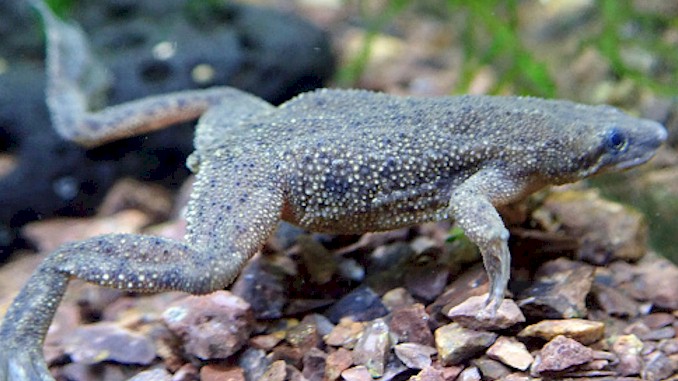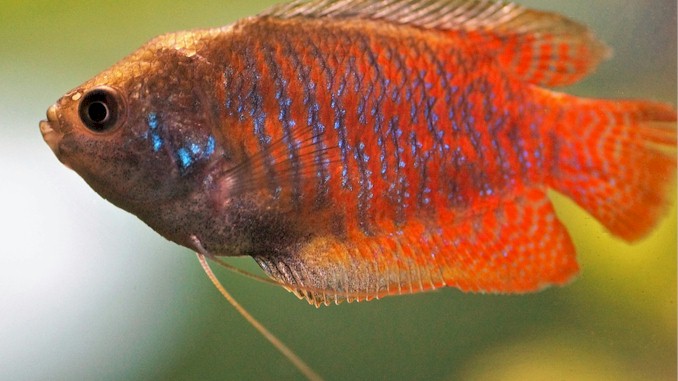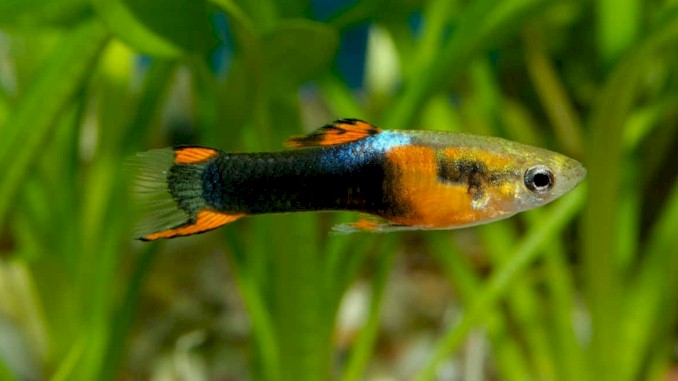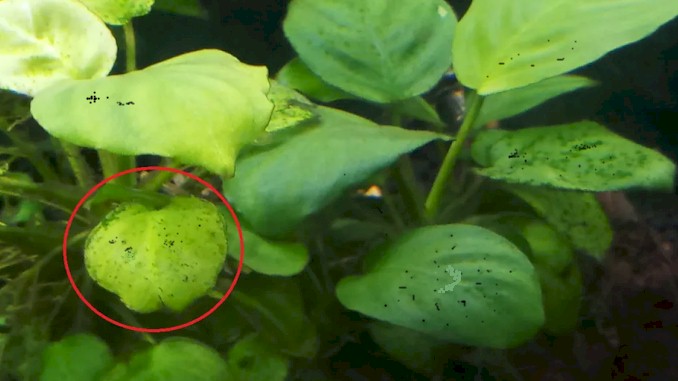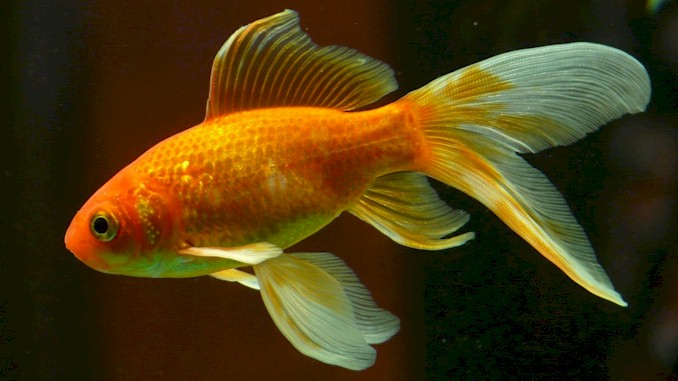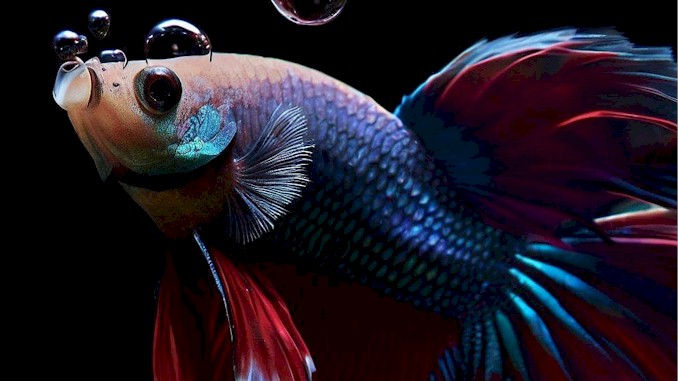Will Frogs Eat Guppies
On a warm and humid summer afternoon, my best friend and I indulged in a delightful English afternoon tea with an array of tasty snacks and a freshly brewed pot of Earl Grey tea. We were engrossed in a fascinating conversation about the aquatic museum when suddenly, my phone rang. It was my friend Todd, who sounded panicked as he asked me if frogs eat guppies. I couldn’t quite comprehend what he was saying at first as he stumbled over his words and then explained that he had just constructed a pond in his backyard adorned with lilies and stocked with guppies to control mosquitoes. However, he noticed that frogs had made themselves at home in the pond, perched on the lily pads. Todd was concerned about his guppies and wondered if they would become prey for the frogs, potentially ruining his pond and mosquito control plan. As he spoke, I finally understood the essence of his question. Todd was worried about maintaining a balance between his frogs and guppies in the pond. If you can relate to Todd’s predicament, then you are in luck because in this post, I will provide you with the knowledge and expertise you need to keep both species thriving in your pond.
Frogs will eat guppies. Frogs are opportunistic feeders and will eat almost anything that fits in their mouths, including fish. However, whether or not a frog will eat a guppy depends on various factors, such as the size and species of the frog, the size and number of guppies in the aquarium, and the availability of other food sources.
While the answer to whether or not frogs will eat guppies may seem straightforward, there is much more to consider when it comes to the compatibility of different aquatic species. In this post, I will delve deeper into the specific factors that can influence whether or not frogs will target guppies as prey, as well as provide some tips on how to create a safe and harmonious environment for both frogs and guppies in the same aquarium. By reading on, you will gain a more comprehensive understanding of this complex topic and be able to make informed decisions when it comes to your own aquatic pet-keeping endeavors.
The Biology of Frogs: Understanding Their Feeding Habits
Frogs are fascinating creatures with a wide range of feeding habits that vary based on their species and environmental conditions. Generally, frogs are opportunistic feeders that will eat almost anything they can fit in their mouths, including insects, worms, spiders, and even small fish like guppies.
Frogs use their sticky, muscular tongues to capture and swallow prey whole. They are also known for their ability to lunge forward and quickly snatch prey with their jaws. Some species of frogs are even known to use their forelimbs to help shove food into their mouths.
The feeding habits of frogs can vary depending on their size, environment, and developmental stage. For example, tadpoles primarily feed on algae and other small aquatic plants, while adult frogs may consume a variety of prey items. Some larger species of frogs, such as the African bullfrog, are capable of eating small birds and mammals in addition to smaller prey items.
Overall, understanding the feeding habits of frogs is essential when considering keeping them with other aquatic species, such as guppies. While some species of frogs may be more likely to consume guppies than others, it is important to recognize that all frogs have the potential to eat small fish. By creating a suitable environment and providing proper nutrition, however, it is possible to minimize the risk of predation and create a safe and harmonious home for both frogs and guppies.
Guppies: An Overview of Their Physical Characteristics and Behavior
Guppies are small, colorful fish that are popular among aquarium enthusiasts due to their attractive appearance, ease of care, and peaceful nature. They are native to South America and come in a variety of colors and patterns, including neon, albino, and metallic. Guppies are livebearers, meaning that they give birth to live young instead of laying eggs.
Physically, guppies are small fish, usually growing to be no more than two inches in length. They have streamlined bodies with fins that are often brightly colored and patterned. Male guppies are typically more colorful than females and have longer fins. Guppies are also known for their adaptability and ability to thrive in a wide range of water conditions, making them a great choice for novice aquarium keepers.
In terms of behavior, guppies are known for their peaceful nature and social tendencies. They are shoaling fish, meaning that they prefer to live in groups of at least six individuals. Guppies are also active swimmers and enjoy exploring their environment. They are omnivorous, feeding on a variety of small aquatic invertebrates and plant matter in their natural habitat.
When it comes to keeping guppies in an aquatic habitat with other species, it is important to consider their social and environmental needs. As shoaling fish, guppies require a minimum group size of six individuals to thrive. They also prefer an aquatic habitat with plenty of plants and hiding places to explore. Additionally, guppies are sensitive to water quality and require a well-maintained aquatic habitat with appropriate filtration and regular water changes. By providing a suitable environment and proper care, guppies can be a great addition to an aquatic community.
Factors That Affect Whether Frogs Will Eat Guppies
Several factors can influence whether or not a frog will eat guppies. The size and species of the frog, as well as the size and behavior of the guppies, can all play a role in determining the likelihood of predation.
First and foremost, it is essential to recognize that not all species of frogs will eat guppies. While some species are known for their aggressive feeding behavior and may readily consume small fish, others are less likely to pose a threat. For example, species such as the African dwarf frog and the African clawed frog are not known to be aggressive predators of fish.
The size of the frog can also influence the likelihood of predation. Larger species of frogs, such as the bullfrog, are capable of consuming larger prey items, including small fish. Smaller species of frogs, on the other hand, may not pose as much of a threat to guppies.
In addition to the species and size of the frog, the size and behavior of the guppies themselves can also play a role in determining the risk of predation. Guppies that are smaller in size may be more vulnerable to predation, while larger guppies may be better able to defend themselves. Guppies that are active swimmers and tend to stay near the surface of the water may also be more likely to be targeted by frogs.
Finally, environmental factors such as the availability of alternative food sources and the overall size and complexity of the aquatic community can also influence the likelihood of predation. Providing a well-balanced diet for the frog and ensuring that the aquatic community includes a variety of species with different feeding habits can help to minimize the risk of predation.
In summary, several factors can influence whether or not a frog will eat guppies. By understanding the species and size of the frog, as well as the size and behavior of the guppies, it is possible to minimize the risk of predation and create a safe and harmonious home for both species.
Providing Adequate Hiding Places for Guppies
As previously mentioned, guppies are at risk of being eaten by frogs in a pond. However, with the proper precautions, you can keep both species in the same pond without issue. One of the most crucial factors in protecting your guppies is providing them with adequate hiding places. Dense vegetation, such as water lilies or submerged plants, provides cover and refuge for guppies to hide from hungry frogs. Rocks, logs, and other structures can also create hiding spots for guppies to escape predation.
It is essential to ensure that there are enough hiding places for all of the guppies in your pond. Overcrowding can lead to increased competition for hiding places and result in guppies becoming more exposed to predators. A good rule of thumb is to have at least one hiding place per guppy in your pond.
In addition to providing hiding places, it is crucial to maintain the vegetation and structures in your pond. Overgrown plants and algae can quickly take over a pond and reduce the available hiding places for guppies. It is important to keep the vegetation trimmed and remove any dead or dying plants from the pond. Similarly, debris, such as fallen leaves or branches, can clog up hiding places and create stagnant areas in the pond. Regular maintenance can prevent these issues and ensure that your guppies have a safe place to call home.
By providing your guppies with ample hiding places, you can reduce their risk of becoming a meal for your frogs. It is important to remember that not all hiding places are created equal. Guppies prefer structures that offer multiple entrances and exits and are not too cramped. By selecting the right hiding places and maintaining them properly, you can create a safe and thriving pond ecosystem for both guppies and frogs.
Avoiding Overcrowding in Your Pond
One of the most common mistakes that pond owners make is overcrowding their pond with too many fish. Overcrowding can lead to poor water quality, increased competition for resources, and a higher risk of disease. When it comes to keeping both frogs and guppies in your pond, it is especially important to avoid overcrowding.
The general rule of thumb for pond stocking is to have no more than one inch of fish per gallon of water. However, this rule is not set in stone and can vary depending on the size of the fish, the filtration system in the pond, and other factors. When calculating how many fish to add to your pond, it is important to consider not just the size of the fish but also their behavior and requirements. For example, guppies are small and don’t produce a lot of waste, but they require hiding places and plenty of vegetation. On the other hand, some species of frogs can grow quite large and may require a lot of space.
It is also important to consider the size of your pond when stocking it with fish. A larger pond can support more fish than a smaller one. If you have a small pond, it is best to keep the number of fish low to avoid overcrowding. Overcrowding can lead to poor water quality and reduced oxygen levels, which can be harmful to both fish and frogs.
In addition to calculating the number of fish in your pond, it is also essential to monitor their behavior and health regularly. Signs of overcrowding include aggressive behavior, poor water quality, and reduced fish activity. If you notice any of these signs, it may be time to reduce the number of fish in your pond.
In summary, avoiding overcrowding in your pond is essential to maintaining a healthy and thriving ecosystem for both frogs and guppies. When calculating the number of fish to add to your pond, consider their size, behavior, and requirements, as well as the size of your pond. Monitoring fish behavior and health can help you identify signs of overcrowding and take action to address the issue.
Choosing the Right Species of Frogs and Guppies
When it comes to keeping both frogs and guppies in your pond, it is important to choose the right species to ensure they can coexist peacefully. Some species of frogs are more aggressive than others and may see guppies as prey, while some species of guppies may be more prone to nipping at the fins of other fish, including frogs. Here are some tips for choosing the right species:
Frogs
- African Dwarf Frogs: These frogs are small and peaceful, making them a good choice for a community pond with guppies.
- Gray Tree Frogs: These frogs are also small and relatively peaceful, but they are excellent climbers and may need a lid or netting to prevent them from escaping the pond.
- American Bullfrogs: These frogs can grow quite large and are not suitable for smaller ponds or those with smaller fish. They are also carnivorous and may see guppies as prey.
Guppies
- Endler’s Guppies: These small and peaceful fish are an excellent choice for a community pond with frogs. They come in a variety of colors and are easy to care for.
- Wild Guppies: These guppies are the ancestors of the domesticated guppy and are known for their hardiness and adaptability. They are also relatively peaceful.
When introducing new fish or frogs to your pond, it is important to do so slowly and carefully. Monitor their behavior closely to ensure they are getting along and not causing any harm to each other. Providing ample hiding places and vegetation can also help reduce aggression and stress.
In summary, choosing the right species of frogs and guppies is crucial for maintaining a harmonious community pond. Consider the size, behavior, and compatibility of different species when making your choices. Introduce new fish and frogs slowly and monitor their behavior closely to ensure they can coexist peacefully.
Maintaining Water Quality for a Thriving Ecosystem
To keep both frogs and guppies healthy in your pond, it is crucial to maintain good water quality. Poor water quality can lead to a range of issues, including disease, stress, and even death. Here are some tips for maintaining water quality in your pond:
Test the water regularly: Use a water testing kit to monitor the levels of ammonia, nitrite, and nitrate in your pond. These levels should be kept within safe ranges to ensure the health of your fish and frogs.
Add beneficial bacteria: Beneficial bacteria can help break down waste and other organic matter in your pond, improving water quality. You can add beneficial bacteria in the form of supplements or through natural methods like adding aquatic plants.
Perform regular water changes: Regular water changes can help remove toxins and pollutants from your pond, improving water quality. Aim to change about 10-20% of the water in your pond every week.
Control algae growth: Algae growth can quickly get out of control in a pond, leading to poor water quality and potential health issues for your fish and frogs. Use natural methods like adding shade or introducing algae-eating fish to control algae growth.
Avoid overfeeding: Overfeeding can lead to excess waste in your pond, contributing to poor water quality. Feed your fish and frogs only what they can eat in a few minutes, and remove any uneaten food.
By following these tips, you can help ensure that your pond has good water quality, providing a healthy ecosystem for both frogs and guppies.
In summary, maintaining good water quality is essential for the health of both frogs and guppies in your pond. Test the water regularly, add beneficial bacteria, perform regular water changes, control algae growth, and avoid overfeeding to maintain a healthy and thriving ecosystem.
Feeding Your Frogs to Reduce the Risk of Guppy Predation
While some species of frogs are known to eat guppies, you can reduce the risk of predation by ensuring that your frogs are well-fed. Here are some tips for feeding your frogs to reduce the risk of guppy predation:
Provide a varied diet: Offering a variety of foods can help ensure that your frogs are getting all the nutrients they need, reducing the likelihood that they will turn to guppies for food. Offer a mix of live and frozen foods, such as crickets, mealworms, and bloodworms.
Feed at night: Many species of frogs are more active at night, so consider feeding them after dark. This can help reduce the chance that they will encounter and eat guppies.
Keep an eye on feeding behavior: Watch your frogs while they eat to ensure that they are getting enough food. If they seem to be hunting guppies aggressively, you may need to adjust their diet or feeding schedule.
Separate guppies from tadpoles: If you have tadpoles in your pond, it is best to separate them from adult guppies. Tadpoles are more vulnerable to predation and may be seen as easy prey by hungry adult guppies.
Consider adding hiding places: Providing hiding places, such as rocks or plants, can help both frogs and guppies avoid each other. This can reduce the chance of predation and help create a more harmonious ecosystem.
By following these tips, you can help reduce the risk of guppy predation in your pond. Providing a varied diet, feeding at night, monitoring feeding behavior, separating guppies from tadpoles, and adding hiding places can all contribute to a more harmonious ecosystem where both frogs and guppies can thrive.
In summary, while some species of frogs may eat guppies, you can reduce the risk of predation by ensuring that your frogs are well-fed and providing hiding places. Offering a varied diet, feeding at night, monitoring feeding behavior, separating guppies from tadpoles, and adding hiding places can all help create a more harmonious ecosystem where both frogs and guppies can coexist.

